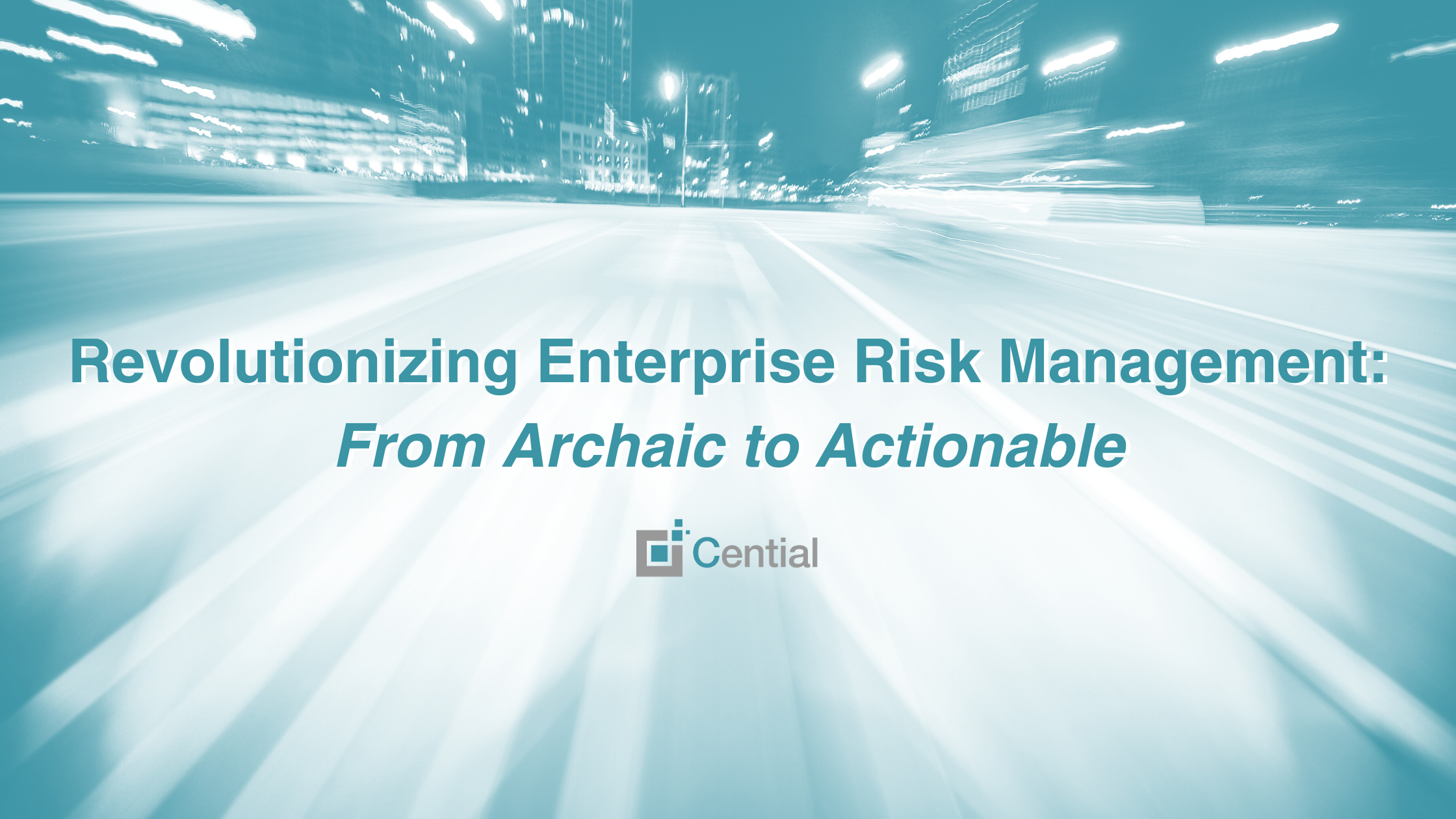
In today’s rapidly evolving business landscape, the traditional approach to Enterprise Risk Management (ERM) is showing its age. As seasoned risk management professionals, we’ve observed a critical disconnect: while the world moves at breakneck speed, many organizations cling to rigid, procedural ERM frameworks that struggle to keep pace. This misalignment isn’t just inefficient—it’s potentially dangerous in a world where new risks can emerge and escalate with unprecedented velocity.
The Problem: ERM Stuck in the Past
For years, ERM has been synonymous with box-ticking exercises and inflexible procedures (I.e., surveys that are completed only to be shelved for another year). Many organizations find themselves going through the motions, completing risk assessments without truly understanding the ‘why’ behind their actions. This approach leads to two significant issues:
- Lack of Adoption: When ERM feels disconnected from day-to-day operations, getting buy-in across the organization is challenging. Risk management becomes siloed, confined to the risk and compliance department rather than integrated into the fabric of the business.
- Inflexibility in the Face of Change: The current risk landscape is dynamic and unpredictable. When a new risk emerges, does it really make sense to initiate a full-scale risk assessment? The historic ERM framework often lacks the agility to respond effectively to rapid changes.
The Solution: Agile, Contextualized, and Inclusive ERM
At Cential, we believe it’s time for a paradigm shift in how organizations approach ERM. The risk methodology should be built on three core principles:
- Agility: ERM should be nimble, able to adapt quickly to new threats and opportunities.
- Contextualization: Risk management processes should be tailored to your specific business context, using your business language and aligning with your existing business processes.
- Inclusivity: Effective ERM extends beyond the risk team, fostering a risk-aware culture throughout the entire organization.
Recognize that every business is unique, with its own risk profile and maturity level. That’s why we don’t believe in one-size-fits-all solutions. Instead, risk practitioners should meet you where you are to build an agile ERM program that scales with the business needs.
Developing a Risk-Aware Culture
One of the most powerful outcomes of a risk management approach is the development of a truly risk-aware culture. We often hear the phrase “We are all in risk management” – it’s a cliché, but it’s profoundly true. The risk team’s goal is to help businesses recognize and enhance the risk management they’re already doing, whether they’re aware of it or not.
By bringing risk management out of the risk department and into the broader business, it empowers every employee to become a risk manager in their own right. This distributed approach not only improves risk identification and mitigation but also drives better decision-making at all levels of the organization.
Continuing Education: Our Three-Part ERM Series
To help you navigate this new approach to ERM, we’re excited to announce a three-part blog series that will dive deep into the key elements of modern, effective enterprise risk management:
- Terminology: We’ll break down the essential ERM terminology, ensuring everyone in your organization speaks the same risk language.
- Tailoring: We’ll explore how to right-size your ERM program, tailoring it not just to your business as a whole, but to each specific business unit.
- Continuous Improvement: We’ll discuss strategies for building resilience and growing your ERM program over time, recognizing that where you start is not where you’ll end up.
There’s more of this ERM series to come; join our email list to receive all three parts directly in your inbox and take the first step towards revolutionizing your approach to Enterprise Risk Management.
